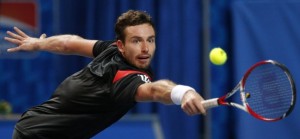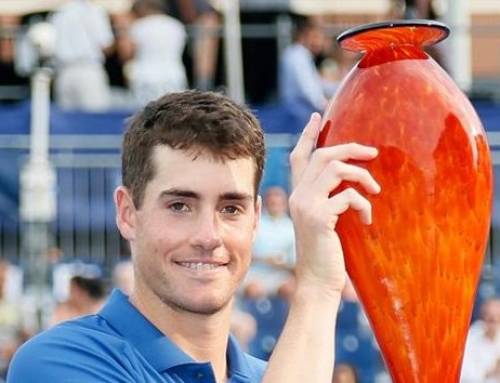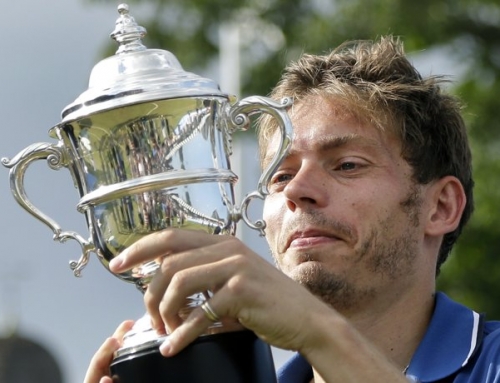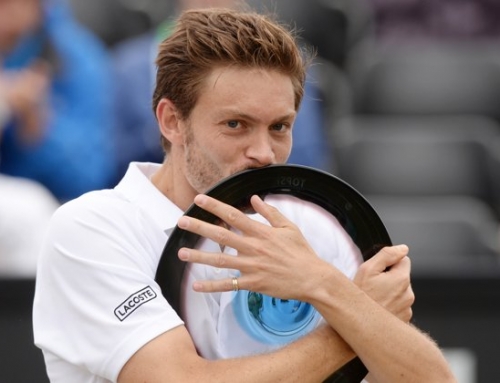 Tennis is a year-round sport. The men used to play right into December. One of the worst decisions ever made was to put the Australian Open in December, often starting right around Christmas. As if it wasn’t hard enough to convince pros to make the long trip to Australia, try making that trip during the peak of Christian holiday season.
Tennis is a year-round sport. The men used to play right into December. One of the worst decisions ever made was to put the Australian Open in December, often starting right around Christmas. As if it wasn’t hard enough to convince pros to make the long trip to Australia, try making that trip during the peak of Christian holiday season.
Things have improved in tennis. The men usually wrap their season in the first few weeks of November and the women finish even earlier. This gives the men about two months of time off which usually means a few weeks off, then back to the grind of training.
Of course, if you’re an American tennis fan, you might think tennis ends after the US Open. Indeed, many an American tennis writer who found themselves writing about tennis instead of football, lament that tennis keeps on going, and wish it wouldn’t so they could watch the sport they truly care about: American football.
However, tennis does indeed go on. This week, there’s a brief jump to Europe, before events head to Asia. Metz (in France) and St. Petersburg (in Russia) both hold events. With the timing so close to the US Open, these events do well if they can manage a star or two. Certainly, none of Federer, Nadal, or Djokovic will attend. Andy Murray is looking to go under the knife to relieve his back problems that have plagued him the last two years, so we may not see him until Melbourne.
Metz had a decently strong draw partly because two French players that did not compete at this year’s US Open, Gilles Simon and Jo-Wilfried Tsonga, did decide to play at Metz, and indeed, both were the finalists. The semis was nearly an all-French affair. The lone non-Frenchie was Florian Mayer who lost in 3 sets to Tsonga. Simon had the better of Nicolas Mahut who seemed irritated at his play, but managed to have one of his better tournaments this year (indeed, as he he heads to the end of his career, Mahut has had his best year ever, with 2 singles titles, his first two ever).
The key to the finals appears to be Simon’s return of serve. Tsonga had a much better serving percentage, nearly 70%, while Simon had a pitiful 50%. Nonetheless, Simon did a better job winning both serves compared to Tsonga. Tsonga was around 56% winning serves on both first and second serves despite having a pretty big serve. Tsonga had lead their head-to-head 5-2, probably on the strength of his power, but this is his first tournament since Wimbledon where he was injured (can either Tsonga or Monfils manage to stay healthy year-round?).
St. Petersburg appears to have been the far more interesting match, perhaps because of Ernests Gulbis. Of the four semifinalists, there was only one seed, namely, Gulbis, and he was the 6th seed with seeds like Fognini, Youzhny, Tipsarevic, and Tursunov having faded before the semis. That left Michal Przysiezny of Poland, Joao Sousa of Portugal, and Guillermo Garcia-Lopez of Spain as the other unseeded semifinalists.
Gulbis beat the Pole in one semi 6-3, 6-3 while Garcia-Lopez won even easier 6-1, 6-1. The finals appeared to be heading the Spaniard’s way too, with a 6-3, 3-0 lead. But somehow, Gulbis found his way to the win. First, he came back to win the second set 6-4. Something weird must have happened, because Gulbis became dominant on first and second serves while Garcia-Lopez fizzled on both, and lost the final set at love.
Gulbis had a bit of controversy when he said that Djokovic wasn’t the same guy he was before he became rich and famous (is he really surprised about that?), but apparently, it didn’t affect his game, and with this title, he’s earned 4 titles in his career, and the first outside the United States where he’s won 2 Delray titles and a Los Angeles title.



![[Stockholm] Dimitrov wins first ATP title with 3-set victory over Ferrer](https://www.essentialtennis.com/wp-content/uploads/2013/10/20131021grigor-500x383.jpg)


